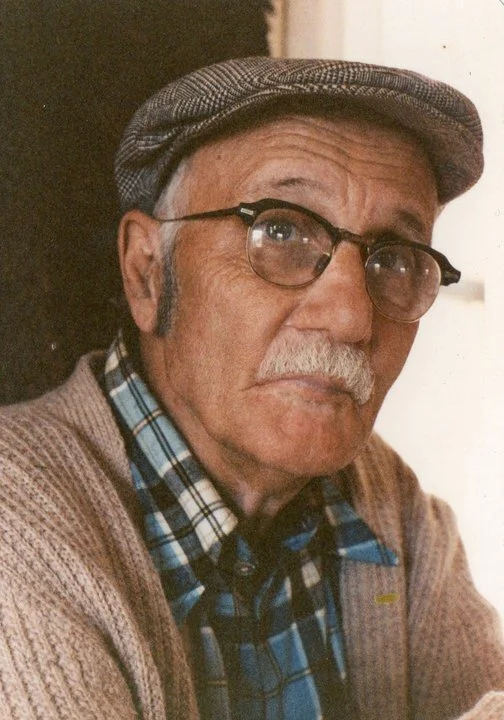A Family of Luthiers: Kai and Vilho Arvi
/Vilho Arvi
I first heard of Arvi basses when I moved to Boston in 1976. I learned that members of the Boston Symphony bass section had been purchasing Arvi basses and encouraging their students to buy them as well. I heard a number of his basses in the orchestras I played with in Boston and they were always held in high esteem. I began to notice that bassists who went on to win orchestral auditions often played on these basses. As a young bass player of Finnish descent, I was particularly interested to learn more about this Finnish bass maker. This story is about Vilho Arvi, a self taught luthier, and his son Kai, who have created more than 389 instruments, 230 of which were double basses.
Vilho Arvi was born in Rauma, Finland, on April 6, 1911. He and his twin brother Toivo were the sons of a master ship’s carpenter. After the untimely death of their parents, the young boys were sent to an orphanage, where they were encouraged to follow in their father’s path. Vilho and Toivo were sent to a wood working vocational school. Both boys played string instruments and were self-taught and the two brothers often played in saloons around town. They decided to put their newfound carpentry skills to work by making their own fiddles. Their abilities were recognized in 1939 when the government awarded them scholarships to study violin making in Italy. Shortly after that Finland was invaded by Russia and the trip was postponed. Both enlisted in the army. Toivo was taken prisoner during the war and was killed in 1941.
After serving in the war Vilho continued to make instruments as well as doing repairs and restorations. Mostly self-taught as a maker, he used his experience as a repairer to “reverse engineer” instruments, which subsequently informed his own creations. In the early 1950s the principal bass of the Helsinki Radio Orchestra, Oiva Nummelin, asked him to make a 5 string bass. It was reported that Jean Sibelius, who was there to hear a rehearsal of one of his symphonies, commented on the “warm, powerful sound” of the new bass.
The economy suffered in post-war Finland. In 1955 Vilho decided to move to the United States with his wife Anna-Lisa, and their children, Topi and Kai. They settled in Cotuit, MA, on Cape Cod where Vilho worked at a boat yard making wooden sailing ships. In 1957 he started making instruments again and by the early 1960s he became well known as a reputable maker and restorer. He would often drive up to Boston, fill his car with instruments, repair them, take them back to Boston, and repeat the process. His study of the fine instruments coming across his bench allowed him to further refine his art. He also played cello in the Cape Cod Symphony, although he did played bass in the Army band during the war.
It was around this time that players in the BSO started asking Vilho to make basses. His first basses in the US were for Henry Portnoi (Principal of the BSO), Bill Rhein (Asst. Principal), and John Barwicki (section). Henry Portnoi suggested that he design the bass with more sloping shoulders to make the upper registers easier to reach. This was one of the last changes Vilho would make to the design of his basses; henceforth his form was set. There was sufficient demand for his basses that he was able to quit his job at the boat yard and work full time as a luthier.
Vilho’s contribution to the bass world, however, would be continued in the next generation by one of his sons. Both Topi and Kai had earned degrees in Fine Arts. After receiving his degree Kai worked for a while as a carpenter. Because of Kai’s background in art Vilho thought he might make a good luthier. Kai agreed to apprentice with his father. In 1980 they made two basses together, instruments #215 and #216 in Vilho’s oeuvre. David Cobb and Tony Beadle purchased those basses. Kai’s first bass on his own was made in 1980 and sold to Barry Boettcher, a Boston freelancer who later sold it to Luke Baker, principal with the Vermont Symphony. Kai asked his father, “How will I know if my basses will sell?” Vilho’s response was, “If you make them the way I showed you, they will sell”. He encouraged Kai not to worry about business and marketing but to concentrate on making the basses to the best of his ability. “If you do that” he said, “the basses will sell themselves”.
Kai and his wife, Lorna, moved to Prince Edward Island, Canada where he built a home and workshop, concentrating almost exclusively on making basses. Sometimes Kai works on commission and other times he will pack two of his latest creations into his truck and go on a road trip to conservatories and orchestras to sell the basses; he usually comes home with an empty truck. He reminisces about the early years of the ISB where he, the bow maker George Rubino, and Kolstein and Son were some of the only exhibitors at the 1981 Zimmerman/Mingus Convention in Cincinnati, OH.
The evolution of the design of the Arvi bass has been minimal. Kai marvels at how his father could make a stable bass with such thin tops (7-8mm in the center) and speculates that the quality and density of the wood available at the time allowed him to do that. Over the years Kai has changed the graduations making it thicker in the center and thinning around the bouts to give the sound more depth. Recently, Kai has started making ¾ size basses as well as the larger 7/8 size instruments.
Vilho Arvi moved back to Finland in 1974 where he made 22 more instruments before he died in 1997. During his life he made 229 instruments - violins, violas, cellos, and approximately 70 basses. Kai is still going strong. He has made 2 violins, a cello, and has just finished another bass -#160. He prefers not to make instruments in the warm, humid, summer months as he feels they will not be stable in the wildly differing climates where they may end up, so he spends that time working as a beekeeper, tending his own hives.
As I think of the fortunes of my own Finnish ancestors, I am always fascinated to learn about the varied career paths my Finnish friends have taken in the United States. I was happy, but not surprised to find two of my brethren excelling at the craft that has affected my life so profoundly. The work that Vilho and Kai have done is a source of great inspiration to me personally. Their ingenuity and work ethic have provided the bass world with some remarkable instruments – living things that will outlive us and provide future bassists with tools to pursue their art for generations to come.
- Jack Hill







